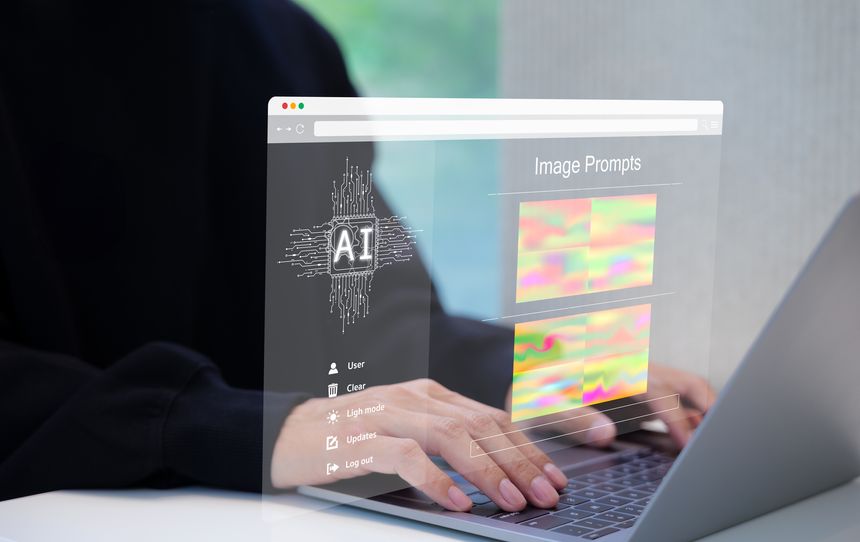The U.S. Copyright Office recently issued a decision, in a letter to counsel for artist Kristina Kashtanova, that the AI-generated images of her comic book "Zarya of the Dawn" were not eligible for copyright protection. The Copyright Office determined that, because the images had been generated by an unpredictable algorithmic process, they lacked the required element of human authorship to be eligible for copyright.
Crucial to the Office's decision was its finding that the output of the "Midjourney" AI employed by Kashtanova was unpredictable and the result of stochastic processes beginning with a seed of random visual noise: "Because of the significant distance between what a user may direct Midjourney to create and the visual material Midjourney actually produces, Midjourney users lack sufficient control over generated images to be treated as the 'master mind' behind them." (Ltr. at 9). The fact that the output was unpredictable both made Midjourney distinct from other computerized artistic tools like Photoshop, and also created too much attenuation between the prompts provided by Kashtanova and the ultimate output for her to be called the author of the images: "The fact that Midjourney’s specific output cannot be predicted by users makes Midjourney different for copyright purposes than other tools used by artists . . . Because Midjourney starts with randomly generated noise that evolves into a final image, there is no guarantee that a particular prompt will generate any particular visual output. Instead, prompts function closer to suggestions than orders." (Ltr ar 9-10).
The holding that unpredictable output precludes human authorship, even if generated in response to human-created prompts, is likely to be a core issue of subsequent disputes and determinations of the copyrightability of AI-generated works and imagery. The Office's emphasis on randomness and unpredictability may also help reconcile the determination that AI-authored imagery is ineligible for copyright with various other court rulings that either explicitly or implicitly hold that, e.g., videogame screenshots – whose exact composition will generally result from dynamic user inputs rather than being completely knowable in advance – are copyrightable. See, e.g. Sony v. Bleem, 214 F.3d 1022 (9th Cir. 2000). In particular, videogames typically use at least certain deterministic base visual assets and deterministic control schemes, even if many games (such as the popular "Roguelike" genre) also have significant random elements.
In the immediate future, the Copyright Office's determination is likely to be a blow for those seeking copyrightability of AI-generated images on the basis of the human contribution of prompts (so-called "prompt engineering,") as well as potential providing limits on the capacity for commercial exploitation of at least unedited or minimally edited AI image generation outputs. (While Kashtanova did perform some edits on at least some of the images output by Midjourney, the Copyright Office stated that because the editing was either de minimis or of unclear extent, the edited images were not independently copyrightable in view of such editing.)
Notwithstanding the Office's determination, it is also worth noting that the text of the work, as well as the " selection, coordination, and arrangement" of the visual elements – all of which were authored by Kashtanova without the use of AI – were held by the office to be copyrightable, although the images themselves were not. For works in which the selection and arrangement of imagery rather than individual stills are an essential part of the work's value value (potentially including, e.g,. comic books, motion pictures, or other works that comprise or incorporate multiple AI-generated works, even if such component works are not themselves copyright eligible), the Copyright Office's letter may not preclude commercial exploitation and copyright protection of AI-generated work as much as it first appears to.




/Passle/62189924f636e915f48daeda/SearchServiceImages/2025-12-09-20-14-08-574-69388310973b7bf3db14f861.jpg)
/Passle/62189924f636e915f48daeda/SearchServiceImages/2025-12-10-19-07-13-134-6939c4e13022ad27657fb9b9.jpg)
/Passle/62189924f636e915f48daeda/SearchServiceImages/2025-10-20-20-51-52-599-68f6a0e866329001bbee3af4.jpg)
/Passle/62189924f636e915f48daeda/SearchServiceImages/2025-10-14-20-16-01-982-68eeaf81a56f2d11bcac094b.jpg)